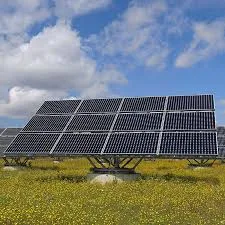solar panel dimensions in meters
Understanding Solar Panel Dimensions in Meters
As the world increasingly turns to renewable energy sources to combat climate change and reduce dependence on fossil fuels, solar energy has emerged as one of the most viable options. Solar panels, which convert sunlight into electricity, are at the forefront of this renewable revolution. However, when considering the installation of solar panels, one key aspect that often gets overlooked is their dimensions. Understanding solar panel dimensions in meters is crucial for effective installation, efficiency, and maximizing energy output.
The Standard Dimensions of Solar Panels
Solar panels typically come in a few standard sizes, although dimensions can vary slightly by manufacturer and model. Most residential solar panels are about 1.65 meters long and 1 meter wide (or approximately 65 inches by 39 inches). This translates to around 1.65 square meters of surface area per panel. When looking at commercial applications, solar panels can be larger, for example, some panels may measure as much as 2 meters by 1 meter (approximately 6.5 feet by 3.3 feet), covering an area of around 2 square meters.
Understanding these dimensions is essential for several reasons, notably in terms of space planning and energy production estimations. Homeowners and businesses need to ascertain how many panels they can accommodate on their roofs or property. This invariably comes down to calculating the available surface area and the orientation of the installation, as factors such as angle and tilt can significantly affect efficiency.
Factors Influencing Solar Panel Size
1. Energy Demand The primary determinant of the number and size of solar panels required for a specific installation is the energy demand of the household or business. Larger energy needs necessitate more panels, while smaller energy needs may be met with fewer, possibly smaller, panels.
2. Available Space The dimensions of the installation site, whether it’s a rooftop or ground-mounted system, play a critical role. Homeowners with limited roof space may need to opt for more powerful solar panels with increased efficiency ratings, which can produce more energy in a smaller footprint.
solar panel dimensions in meters

3. Panel Efficiency The efficiency of solar panels, typically ranging from 15% to over 22%, also influences the overall dimension considerations. High-efficiency panels might be smaller in dimensions yet produce more energy than less efficient, larger panels. This can make a significant difference when space is constrained.
4. Design Aesthetics For residential installations, aesthetic considerations may affect the choice of panel dimensions. Homeowners may prefer panels that blend seamlessly with the roofline or comply with local building codes concerning aesthetics.
Installation Considerations
When planning a solar panel installation, the dimensions in meters must be carefully considered not only for the panels themselves but also for the overall layout. It's essential to allow for space between panels for optimal performance and maintenance access. Moreover, shading from nearby trees or buildings can impact the performance of solar panels, making the orientation and positioning crucial in maximizing sunlight exposure.
Another key consideration is local regulations and building codes. In some regions, there may be specific requirements pertaining to the size and placement of solar installations, especially in residential areas. It’s always best to consult with local authorities or a solar installation professional to ensure compliance with these regulations.
Conclusion
In conclusion, appreciating the dimensions of solar panels in meters is fundamental for anyone considering solar energy. An understanding of standard sizes, efficiency, placement, and local regulations all contribute to a successful solar panel installation. As we continue to progress toward a sustainable future, making informed decisions about solar energy can lead to significant environmental and financial benefits. Solar panels represent not just a technological advancement but a crucial step toward harnessing the power of the sun, and understanding their dimensions is an important part of that journey.
-
Understanding the Advantages of Solar String Inverters for Your Energy SystemNewsApr.29,2025
-
Choosing the Right PV Inverter: A Comprehensive GuideNewsApr.29,2025
-
The Future of Solar Power: Exploring Bifacial Solar PanelsNewsApr.29,2025
-
The Complete Guide to Solar Panels: Efficiency, Cost, And InstallationNewsApr.29,2025
-
The Best Options for Efficiency and Cost-EffectivenessNewsApr.29,2025
-
Harnessing the Power of Off-Grid Solar Inverters for Energy IndependenceNewsApr.29,2025







